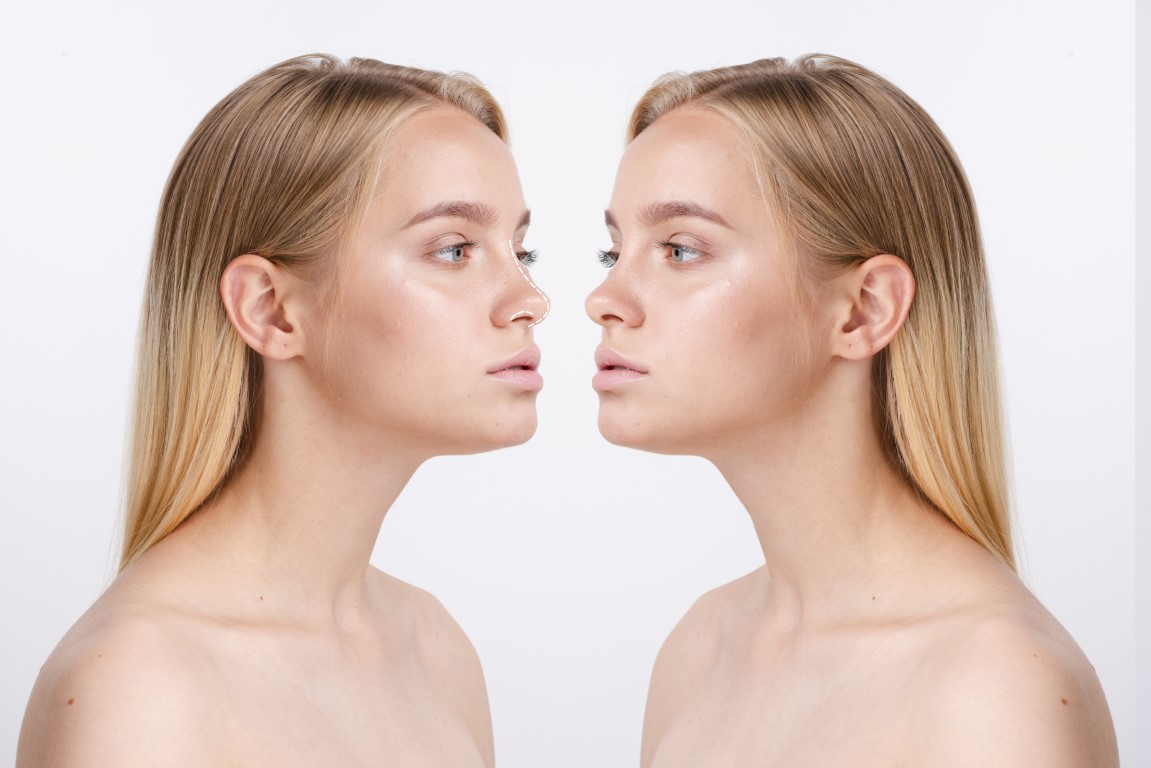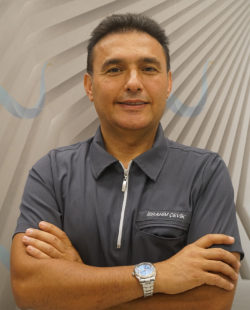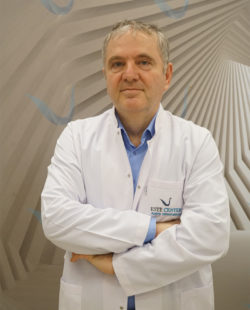Before & After






In some cases, nose shaping can be performed using fillers. This procedure is used to fill the bridge of the nose, lift the tip of the nose, and correct the shape of the nose. The techniques and methods used for rhinoplasty may vary depending on the needs of the patient. Therefore, the rhinoplasty doctor will make a careful evaluation to choose the most appropriate techniques according to the patient’s nose structure and needs.
Closed Rhinoplasty (Closed Rhinoplasty)
Closed rhinoplasty is a technique used in rhinoplasty surgery and is performed by making small incisions through the nostrils. It is also known as “closed technique” or “endonasal rhinoplasty”. It is preferred for simple or moderate surgical interventions for nose shaping . This technique allows the surgeon to directly access the tissues inside the nose and is therefore considered a less traumatic procedure. The techniques and methods used may vary depending on the patient’s nose structure and needs. Closed rhinoplasty is preferred by some patients because it can offer a faster recovery time with less post-operative pain, swelling and bruising. The surgeon will perform a detailed evaluation to choose appropriate techniques to improve the patient’s nose shape and function.

Open Rhinoplasty
Open rhinoplasty is preferred for more complex rhinoplasty procedures compared to closed rhinoplasty because it provides the surgeon with a wider field of view. This allows the surgeon to focus on more details and better correct the shape and functionality of the nose. It can be customized according to the complexity of the surgeon’s nasal structure and the needs of the patient. This method makes it easier to see and follow the procedures performed during plastic surgery, thus enabling the surgeon to perform the procedure in a more accurate and controlled manner. Another advantageous feature used in open rhinoplasty is that the post-operative stitches of the incision made outside the nostrils can be removed more easily. This results in a faster recovery time with less pain, swelling and bruising.
How is Open Nose Aesthetics Performed?
Open rhinoplasty is a technique used for procedures. The procedure is usually performed under local or general anesthesia and takes several hours. Before surgery, the patient’s medical history and current health condition are evaluated. The patient’s nose structure and skin quality are also examined. Among local or general anesthesia options, the one that is suitable for the patient’s comfort and safety is preferred.
In open nose surgery , an incision is made outside the nostrils. This incision is made in the area between the tip of the nose and the bridge of the nose. The nasal cartilages and bones are restructured to create the new shape of the nose. Nasal bones can be cut and reshaped, cartilages can be added or removed, and nostrils can be narrowed or widened. The nasal septum is corrected and the bones and cartilages inside the nose are shaped. After the nasal cartilages and bones are reshaped, stitches are used to attach the skin. After the procedure is completed, gauze or tampons are placed in the nose area. The healing process may vary from patient to patient, but usually takes a few weeks or a few months.
Ultrasonic Rhinoplasty (Ultrasonic Nose Aesthetics)
Ultrasonic rhinoplasty is a technique developed as an alternative to traditional surgeries. This method can also be called non-surgical rhinoplasty. A special device, an ultrasonic device, is used to shape the nasal bones. It is usually performed under local anesthesia. The surgeon cuts and shapes the nasal bones using the ultrasonic device. Instead of cutting the nasal bones, this device cuts the bones in a controlled manner with vibrations. This helps make the procedure less traumatic and causes less bleeding. Ultrasonic rhinoplasty method is recommended only for suitable candidates. These may include those whose nasal bones need to be cut less, those who want to heal faster, and those who want a more natural nose shape.

Nose Aesthetics Types
There are different types of rhinoplasty performed with different techniques and methods, depending on the anatomical characteristics and aesthetic problems of the nose .
Nasal Bone Curvature
Nasal bone curvature is a condition in which the nasal bone is crooked and causes asymmetry in the shape of the nose. This situation can cause both aesthetic and functional problems. It is a surgical procedure performed to correct these problems. It is also preferred for broken nose surgery .
Nose Rasping
Nasal rasping aesthetics is the process of correcting the tip of the nose or the small protrusions on the back of the nose by rasping. This procedure is a minimal aesthetic operation that generally does not require surgical intervention.
Nose Reduction
Rhinoplasty is a surgical procedure performed to reduce the size of the nose. This procedure, which can be used for extensive rhinoplasty , can also be performed due to nose deformities or anatomical disorders in the nose structure.
Nose Filler
Nasal filler aesthetics is a suitable option for patients who want to make slight changes in the appearance of their nose. Nasal filler aesthetics are used to make minor changes such as raising the bridge of the nose, correcting the drooping nose tip, or making the nostrils smaller.
Nose Lift
Nose lift is a type of rhinoplasty performed to increase the curvature of the nose tip or correct the drooping nose tip. Nose lift is one of the most frequently performed aesthetic procedures for male rhinoplasty , especially to achieve a natural appearance .
Things to Consider Before and After Rhinoplasty Surgery
Rhinoplasty is a serious surgical procedure. There are certain issues that need to be taken into consideration before and after rhinoplasty . These issues also prevent you from experiencing any negativities after the operation.
Rhinoplasty is a surgical procedure performed to change the shape and size of the nose. This procedure is usually done for aesthetic reasons. But sometimes it is done to solve breathing problems. He uses many different methods to change the structure of the nose. These methods include reducing the size of the nostrils, reshaping the nasal bones and cartilages, correcting the nose tip and correcting the nasal dorsum. It is a procedure that gives successful results when performed correctly. However, like any surgical procedure, it carries risks. These risks include infection, bleeding, anesthesia reactions, and poor outcomes. It is a surgical procedure performed for aesthetic reasons or to solve breathing problems. The procedure uses many different methods to change the structure of the nose. The recovery process after the procedure may vary from person to person.
What is Rhinoplasty (Nose Aesthetics)?
Rhinoplasty , also known as rhinoplasty, is a surgical procedure to change the shape and size of the nose. It is a surgical procedure performed to improve the appearance and functionality of the nose. Rhinoplasty procedures performed for aesthetic reasons aim to provide an appearance compatible with the person’s facial features by changing the shape and size of the nose. In addition, rhinoplasty can also solve breathing problems caused by curvatures in the nasal septum, defects in the nasal bones or other structural problems.
How is Aesthetic Nose Surgery Performed?
Rhinoplasty is usually performed using different techniques to shape the nose structure. These techniques include closed rhinoplasty and open rhinoplasty. Closed rhinoplasty is performed through incisions inside the nose, while open rhinoplasty is performed through incisions made under the skin on the nose. Open rhinoplasty allows for more complex procedures by providing a wider field of view.
Rhinoplasty surgery is usually performed under general anesthesia. During the procedure, an incision is made to lift the skin on the nose and procedures are performed to reshape the nasal bones and cartilages. Procedures such as nasal bone reduction, nostril reduction, nose tip correction and nasal dorsum correction can be performed. After the procedure, the skin on the nose is stitched back into place and a splint is applied to the nose area and the healing process begins.
Rhinoplasty Surgery Prices
Rhinoplasty prices may vary depending on many factors. Each situation and the procedures to be performed vary according to the needs of the nose and your demands. Therefore, you need to consult your doctor for an exact price. Rhinoplasty prices may vary depending on the geographical location of the application area. For example, rhinoplasty prices in Istanbul may be more expensive than those performed in smaller cities. In addition, rhinoplasty is a very delicate procedure and should be performed by an experienced doctor to achieve a successful result. An experienced doctor’s fees may be higher than a beginner’s doctor.
The difficulty of the operation also affects prices. The procedures to be performed vary depending on the needs of each patient and nose. Therefore, the difficulty of the operation may have an impact on the application time and price. The technique used may also affect nose surgery prices. Some techniques require more time and effort than others. Procedures are usually performed with general anesthesia. It is more expensive than local anesthesia. Therefore, using general anesthesia in rhinoplasty may increase the cost of the procedure.
Rhinoplasty Techniques and Methods
There are various techniques and methods used for rhinoplasty and nose aesthetics. Depending on the structure of the nose and the needs of the patient, the surgeon may prefer a particular technique or method. Listed below are the most commonly used techniques:

- The open rhinoplasty technique is used to access the nasal cartilages and bones through an incision outside the nostrils. This technique allows the surgeon to obtain a better view and provide greater control.
- Closed rhinoplasty is performed through incisions made inside the nostrils. This technique is preferred when minor changes need to be made to the patient's nose structure. The revision technique is used to correct problems that occur after a previous rhinoplasty. This technique is preferred in cases where the nose structure is more complex and other techniques are inadequate.
- Ultrasonic rhinoplasty is especially preferred in cases where the nasal bones are thin. Nasal bones are gently cut and shaped using ultrasonic devices.
Before Rhinoplasty
After the nose aesthetic appointment is made, preparations for the surgery begin a few weeks before. In order to avoid any problems during the procedure, the following are the things to consider beforehand:
- Smoking and alcohol consumption should be avoided at least two weeks before the operation.
- If medication is used, the doctor should be consulted to determine whether the use of these medications can be continued.
- Attention should be paid to the diet, especially foods rich in vitamins and minerals should be consumed.
- With preparation before rhinoplasty, the patient must complete all the necessary preparations for the surgical procedure.
After Rhinoplasty
After rhinoplasty , there are some points that need to be taken into consideration in order to avoid bruising, bleeding and have a comfortable recovery process.
- Bed rest is recommended after surgery, especially in the first 24-48 hours. Your head should be kept high while lying down.
- Applying pressure on the nose should be avoided. The nose area should not be touched, especially for the first few days.
- The crusts and stitches inside the nose will dissolve spontaneously after a certain period of time, the inside of the nose should not be touched during this period.
- Post-operative swelling and bruising are normal, but cold compresses or ice packs can be used to minimize them.
- Activities such as swimming, exercising, and heavy lifting should be avoided for a few weeks after surgery.
- Post-operative check-ups need to be done regularly.
Frequently Asked Questions About Rhinoplasty and Surgery
You can continue reading to find frequently asked questions and answers about nose aesthetic surgery and rhinoplasty prices .
Rhinoplasty surgery can also be performed on people with functional problems such as nasal congestion, sinus problems, and nose bleeding. However, people who want to have nose surgery must be healthy. Additionally, it is important to choose the best rhinoplasty doctor when choosing a doctor before the surgery. Your doctor should make a detailed evaluation, thanks to his experience and skills, and decide whether the surgery is suitable for the person.
Before the surgery, your doctor will give you information about an estimated surgery duration and how long it will take to complete the procedure. However, the duration of the surgery is important in order to ensure that all the steps required to complete the procedure are carried out properly and the results are in line with your expectations.
Unless your doctor approves, you should avoid actions such as cleaning the inside of the nose or touching the injured area. The complete recovery process may take approximately 1-2 months. During this period, the area around the nose may be sensitive. It is important that you do not skip post-operative check-ups and follow your doctor's recommendations.
Meet Our Doctors



